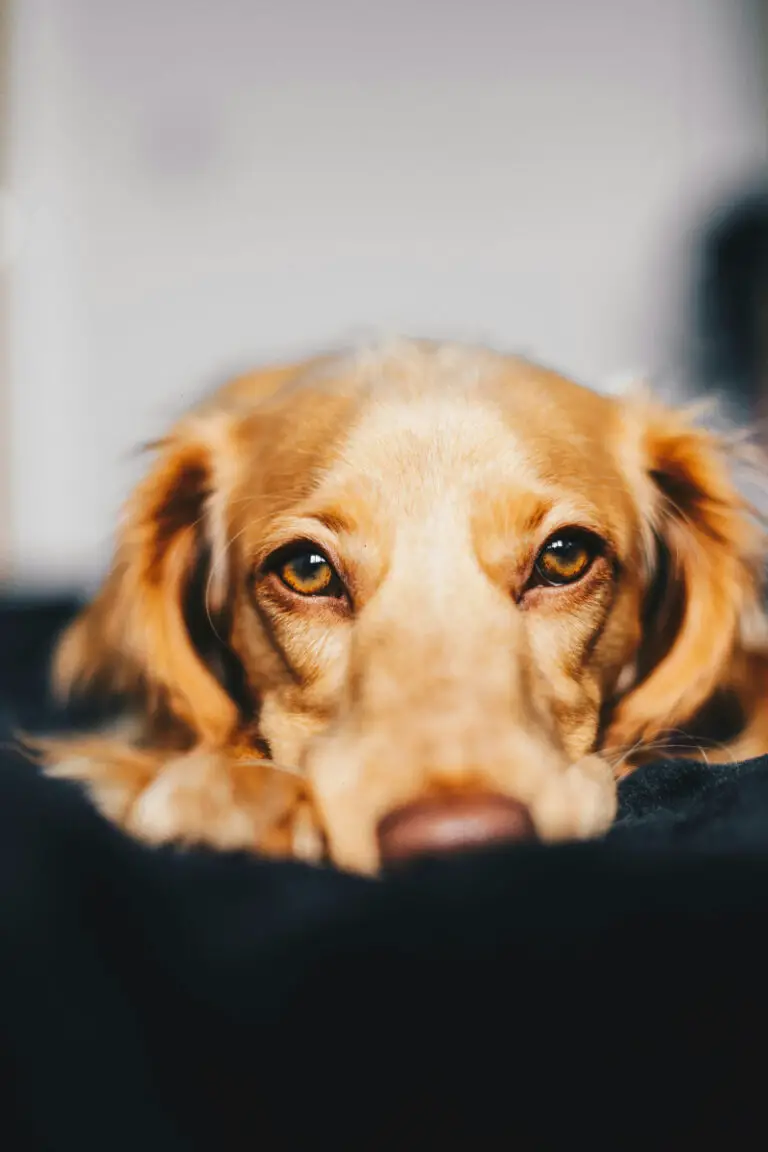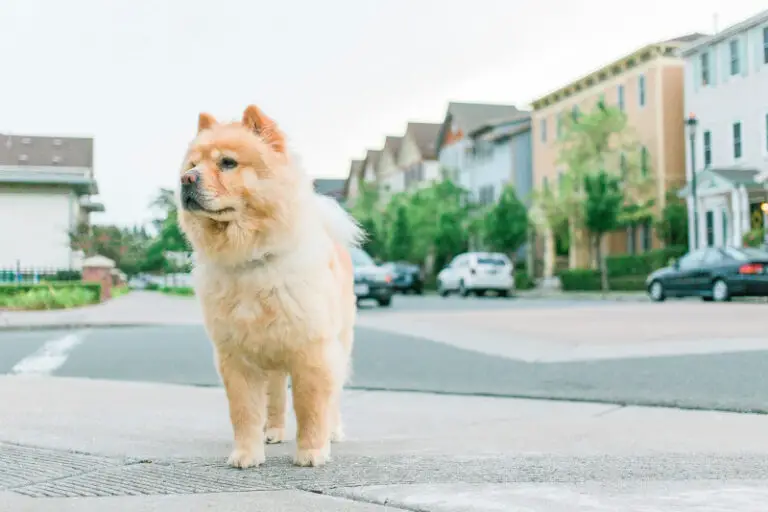Similar to their owners, dogs also experience anxiety. Although anxiety is a normal and even necessary emotion, its prolonged presence in the dog can lead to an anxiety disorder. This, in turn, can lead to behavioral problems if not corrected or treated early.
How to know if your dog is anxious? What to do to reduce his anxiety? Keep reading below and learn everything about anxiety in dogs: causes and types, warning signs, treatments, available medications, natural remedies, preventive measures… and much more.
Table of Contents
What is anxiety in dogs and what causes it?
Canine anxiety is described as a state of mind in which the pet experiences nervousness, restlessness, and insecurity. Typically, the anxious dog develops behavioral changes, seriously affecting coexistence. Sometimes it may seem like anxiety has come out of nowhere, but the truth is that there is always a cause.
Anxiety disorder in dogs can present itself in many forms, for example:
- Separation anxiety. It usually occurs when the dog becomes separated from the owner or other regular caregivers. It is the problem that almost all of us usually think of when talking about dogs with anxiety.
- Environmental Anxiety. It often manifests as a fear of leaving the house or going to a specific place. It can also be caused by frightening situations or loud noises (sirens, alarms, fireworks, thunder).
- Social anxiety. The dog becomes anxious when coming into contact with different people or other dogs. This may be due to past trauma in a rescue center, or insufficient socialization.
- Generalized anxiety. It refers to anxiety that appears “out of the blue,” with no known cause or trigger. It can occur even in dogs that have been well trained.
- Sickness anxiety. Various illnesses can trigger anxiety in dogs; vision loss and hearing loss are two good examples.
The different types of canine anxiety can be due to multiple factors and can occur separately or together.
What are the causes of anxiety in dogs?
As we mentioned before, this is a disorder that can have various causes. According to expert sources, including the Merck Veterinary Manual, the most common causes of canine anxiety are:
- The separation
- The fear
- The aging
1. Separation anxiety
A large percentage of dogs that have anxiety suffer from separation anxiety. In that case, the pet cannot find comfort when left alone or separated from the owner. Many dogs become nervous or anxious as soon as the person is preparing to leave the home. Some may even try to avoid leaving.
Typically, a dog with separation anxiety will start barking and displaying other symptoms of distress within minutes of being left alone. It is common for this to lead to undesirable behaviors, such as howling, urinating, and defecating in the house, destroying furniture and accessories, scratching doors and windows, digging, etc.
Once the person returns home, their furry friend will act like it’s been years since they last saw each other.
It may interest you: Why Do Dogs Howl? 7 Real Causes + Myths
2. Fear anxiety
Fear-related anxiety in dogs is usually caused by fear of:
- Loud noises, such as thunder and alarms
- Strange people or animals
- Certain visual stimuli, such as hats or umbrellas
- New environments
- Some specific situations, such as a visit to the vet’s office or car trips
- Some surfaces, such as grass or hardwood floors
While most dogs may have brief reactions to these types of stimuli, an anxious dog will be much more affected.
3. Anxiety about aging
This type of anxiety specifically affects older dogs and may be associated with cognitive dysfunction syndrome. In affected dogs, memory, learning, perception, and awareness begin to decline, similar to the early stages of Alzheimer’s in people.
As you might expect, this creates a lot of confusion and anxiety.
How to know if a dog has anxiety? 11 common symptoms
It should be noted that symptoms can vary from dog to dog, depending on the type and severity of their anxiety, but it is said that the easiest way to identify if a dog is suffering from anxiety is to pay attention to their behavior and body language.
The condition can manifest itself through unusual or exaggerated reactions to certain people, changes, and situations.
The 11 most frequent signs of anxiety in dogs are:
- Excessive barking
- Howls and whimpers
- General nervousness or restlessness
- Aggressiveness
- Destructive behavior
- Repetitive or compulsive behaviors
- Urine and feces in inappropriate places
- Tremors
- Position of the ears backward and/or folded tail
- Lack of appetite or changes in eating pattern
- A constant search for a hiding place
As an owner, it is important to watch closely for any of these symptoms. A dog may behave anxiously from time to time because he is bored or hasn’t had enough exercise, which is considered normal. But if any of those signs recur, it could be due to an anxiety disorder.
How do you treat a dog with anxiety?
The first step toward treating canine anxiety is getting a diagnosis from a veterinarian. This can help identify the type of anxiety your dog is suffering from, as well as possible causes and triggers. You will also be able to determine if the anxiety is a situational problem or if it is becoming a serious disorder.
Once the diagnosis is made, the veterinarian will develop a treatment plan.
Considering that anxiety is often caused by a variety of factors, the best way to treat it is to apply a combination of training, preventive strategies, and, in some cases, medication.
Training strategies
There are several training strategies owners can use to treat dog anxiety. One of these is counterconditioning, the purpose of which is to change the pet’s response to the stimuli responsible for his anxiety. The goal is to replace anxious or aggressive behavior with more desirable behavior, such as sitting or concentrating on the owner.
Another effective strategy is desensitization. In this case, the dog should be exposed to the source of anxiety, preferably at a reduced intensity and in small doses. Repeated exposure and rewarding positive behavior can go a long way toward managing anxiety.
Medications to reduce anxiety in dogs
If the dog develops a severe anxiety disorder, the vet may recommend the use of medications or natural therapies. Some antidepressant medications to treat dogs with anxiety are fluoxetine and clomipramine.
For predictable events that trigger anxiety attacks, such as thunderstorms, fireworks, or car trips, your vet might prescribe the benzodiazepine medication along with an antidepressant to help your dog cope with stress.
Older dogs with anxiety from cognitive dysfunction syndrome may benefit from the drug selegiline.
In addition, natural therapies and products are said to help as well. These are based on the use of pheromones and aromatherapy to relieve anxiety, either in combination with other medications or on their own.
Does CBD oil treat canine anxiety?
An alternative treatment method that appears to be effective in combating anxiety in dogs is cannabidiol or CBD oil. Different anecdotal reports have claimed that this compound helps calm the symptoms of an anxious dog, just as it helps in humans.
However, to date, there is no scientific information on the effect and possible contraindications of CBD therapy to manage anxiety in dogs. If you are considering its use as an alternative treatment, be sure to consult your veterinarian first.
5 preventive measures against anxiety
Predicting exactly what will make a dog anxious can be very difficult. And even more difficult is to determine if the anxiety will become a serious disorder. That is why it never hurts to know some basic measures to prevent puppies, adult dogs, and old dogs from developing anxiety problems.
1. Learn to read body language
Knowing how to identify when your dog is feeling uncomfortable or scared can help you avoid negative experiences, or use them as a positive training moment. Body language can also indicate when the pet is becoming anxious, which is especially helpful if they already have a history of anxiety (separation, fear, etc.).
2. Socialize early
Proper socialization can prevent the development of anxiety. Introducing new people, dogs, animals, places, and experiences can help avoid over-response in the future.
3. Follow obedience training
Obedience training is an essential tool to prevent and control canine anxiety. This builds trust and lays the foundation for a healthy relationship. Consider that a well-trained dog is easier to socialize than an untrained dog.
4. Provide enough exercise
Regular exercise and stimulation are crucial to your mental and physical well-being. A well-exercised and stimulated dog is less likely to develop destructive behaviors.
5. Avoid triggering situations
If your dog has been diagnosed with an anxiety disorder, it’s a good idea to start avoiding or preventing the situations that trigger his anxiety attacks. For example, if you know he gets anxious around large groups of dogs, avoid taking him to busy parks.
Quick Answers to Frequently Asked Questions
What breeds of dogs are prone to anxiety?
The 11 dog breeds most prone to anxiety are:
- German shepherd
- Australian pastor
- Labrador retriever
- Vizslas
- Border collie
- German shorthaired pointer
- Cocker spaniel
- Bichon Frize
- Havanese bichon
- Cavalier King Charles spaniel
- Greyhounds
It appears that many toy dogs are also prone to anxiety, especially separation anxiety.
In general, these are very sensitive and intelligent dogs that need some task to do or that thrive better in the company of their owners.
It may interest you: Top 17 Calmer Dog Breeds (Less Energy)
How to calm my dog’s anxiety naturally?
Anxiety in dogs can be managed with medical treatment, but there are also some methods and remedies that help reduce it naturally.
These are 9 recommendations to calm an anxious dog and promote its well-being…
1. The exercise
Giving your dog plenty of exercise time each day is a great way to relieve anxiety, distract his mind, and use up excess energy. Just like in humans, exercise helps relieve stress in dogs due to the production of endorphins.
2. Physical contact
There is probably nothing more comforting to an anxious dog than physical contact with its owner. Once the symptoms of anxiety are identified, nip them in the bud. Give him a long petting session or cuddle him while you rest on the couch together.
3. Massages
Did you know that massages work wonders to combat canine anxiety naturally? Anxiety often causes tension in the dog’s muscles, which is why massage therapy is effective in relaxing the dog and bringing it out of that state.
Over time, you’ll likely be able to identify where your dog is holding his stress and just have to massage this particular area.
4. Music therapy
Another natural remedy to relieve anxiety is music therapy. The relaxing power of music can help while at home or in the car. Likewise, it reduces sensitivity to common noises that bother the dog and create anxiety attacks.
According to some research, many dogs like classical music.
5. The soothing coats and t-shirts
Calming dog coats and t-shirts apply gentle, steady pressure to the pet’s torso, surrounding it as a baby swaddle. This remedy is recommended for dogs with any type of anxiety induced by separation, car travel, noise, or strangers.
6. Homeopathy
Some owners use homeopathic anti-stress drops to relieve their anxious dogs. Typically, 2-4 floral drops are added to the pet’s drinking water. Others use to spray homeopathic products on the dog’s bedding and toys.
7. The diet
It is said that increasing the consumption of some foods in the canine diet also contributes to lower levels of anxiety. This includes beef liver, salmon, eggs, spinach, cranberries, avocado, and sweet potatoes.
Recommended: Can Dogs Eat Liver? Types, Recipes, and Contraindications
8. Supplements
There are different types of supplements that seem to relieve anxiety in dogs. These often contain melatonin, thiamin, chamomile, L-theanine, or L-tryptophan, and are often available as treats. It is a highly recommended therapy for generalized and travel anxiety.
9. Calming Pheromone Aromatherapy
A very popular natural method of treating anxious dogs is pheromone aromatherapy. The remedy is very simple and consists of placing the pheromone diffuser in the room where the dog spends most of its time. Once they start to release into the air, the pheromones will have a calming effect on the pet.



